|
|
In this post, I am going to share the benefits and drawbacks I considered, and the lessons I have learned in my journey of selling a free theme with paid add-ons, instead of selling a premium theme. When I started out a year ago in the highly competitive WordPress theme business, I was contemplating on how to best sell my theme.
Every theme provider at that time had a similar business model. They were either selling:
- Freemium themes (giving away a free version of a premium theme with limited features) or
- Premium themes (one premium version with all the bells and whistles)
But I chose a business model that I knew very few theme sellers were following. It was a model being used by WordPress plugins like BuddyForms, Caldera Forms and also Easy Digital Downloads and WooCommerce. Their base plugins are free and fully functional out-of-the-box, but instead of selling a premium version, they sell add-ons (also called extensions) that extend the functionality of the base plugin.
It’s no secret that this model has worked very well for them. So I knew I wouldn’t exactly be shooting an arrow in the dark if I went with it. Fast forward to today, my OceanWP theme has been downloaded 60,000+ times, and the premium add-on sales aren’t bad either.
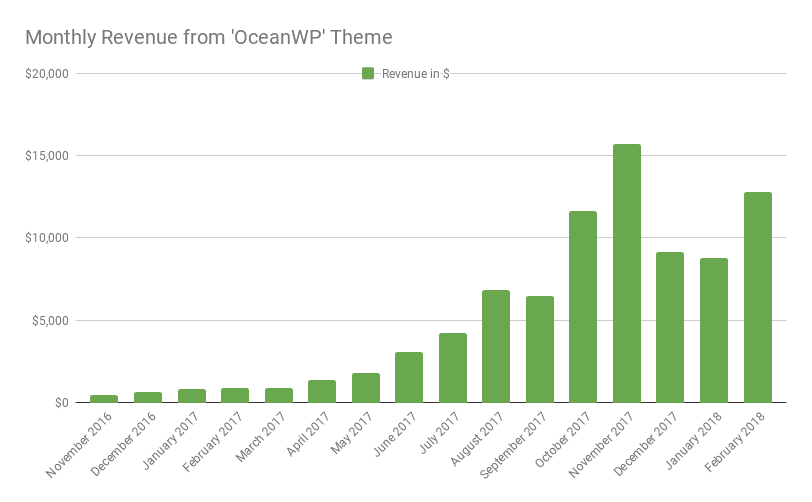
What’s So Great About The Paid Add-ons Model?
#1 – Less Bloat & High Performance
Every unnecessary feature in a theme is a burden on server bandwidth, hosting space, and loading speed, so a huge benefit of the paid add-ons model is that the buyers don’t get a base theme bloated with all of the features, many of which they don’t even need. Instead, they can purchase and install only the add-ons they want for their specific needs. The result is a theme that makes your website load lightning fast.
For instance, take a look at speed test scores for my e-commerce demo site which uses the OceanWP theme and WooCommerce:

The performance improvement theme buyers get is a huge plus for both the visitors and for their website SEO (search engine optimization).
A base theme with less bloat is also great for the theme developer. The fewer features your base theme has, fewer will be the compatibility issues with other WordPress plugins that the buyer might already have installed on their website. As a result, you’ll get fewer support requests than otherwise.
The fewer features your base theme has, fewer will be the compatibility issues with other WordPress plugins that the buyer might already have installed on their website. As a result, you’ll get fewer support requests than otherwise.
Even when you do get a support request regarding plugin clashes, it would be easier to handle since the buyer would be more likely to know which specific add-on they recently installed or updated.
With a premium theme, he’ll have no initial idea on what in your theme is clashing with one of his plugins, or which plugin is interfering with what functionality in your theme.
#2 – Your Theme Works Right Out-Of-The-Box
How many times have you installed a free version of a premium theme and noticed that even the most basic features are missing?
And then with everything you try to do in your WP dashboard, you see some popup or message which essentially says, “To make this happen, buy the pro version,” “To do that, get the premium theme.”
A free theme with paid add-ons doesn’t work like that. The success of this model is based on your base theme’s ability to give tremendous value for free.
The success of the paid add-ons model is based on your base theme’s ability to give tremendous value for free.
One of the reasons plugins like WooCommerce are so successful is that they are easy to use and have powerful features, even without the add-ons. The add-ons extend the functionality but don’t force the user to depend on them to make the plugin work.
As an example, with the OceanWP theme, right out-of-the-box, it is:
- E-commerce ready
- Includes a mega menu
- Loads lightning fast
- Ready for translation into other languages
Any or all of these features would have either required the purchase of a premium theme, or premium plugins or add-ons in other cases. But OceanWP provides all this value by default and at zero cost, as part of its business strategy.
#3 – More Freedom & Flexibility In The Long-term
For a premium theme, the scope will always have to be pre-defined as well as limited. The theme developer/seller needs to be clear on what features his theme will have and which ones to exclude.
Simply put, these decisions are based on two factors, which are always against each other:
- What features will make the theme appealing to the largest number of people?
- What features will not have a huge impact on performance?
A premium theme developed with this approach will be one that’s just “good” for most people. It’s a theme that is not too bad but is not perfect for anyone, either.
On the other hand, selling a free theme with paid add-ons gives unlimited freedom and flexibility to both the developer and the buyer. It’s good for the developer because they don’t have to put a cap on their vision. They would still need to prioritize as to which are the add-ons they’ll develop first and which later, but not in a limiting way as in the case of premium themes.
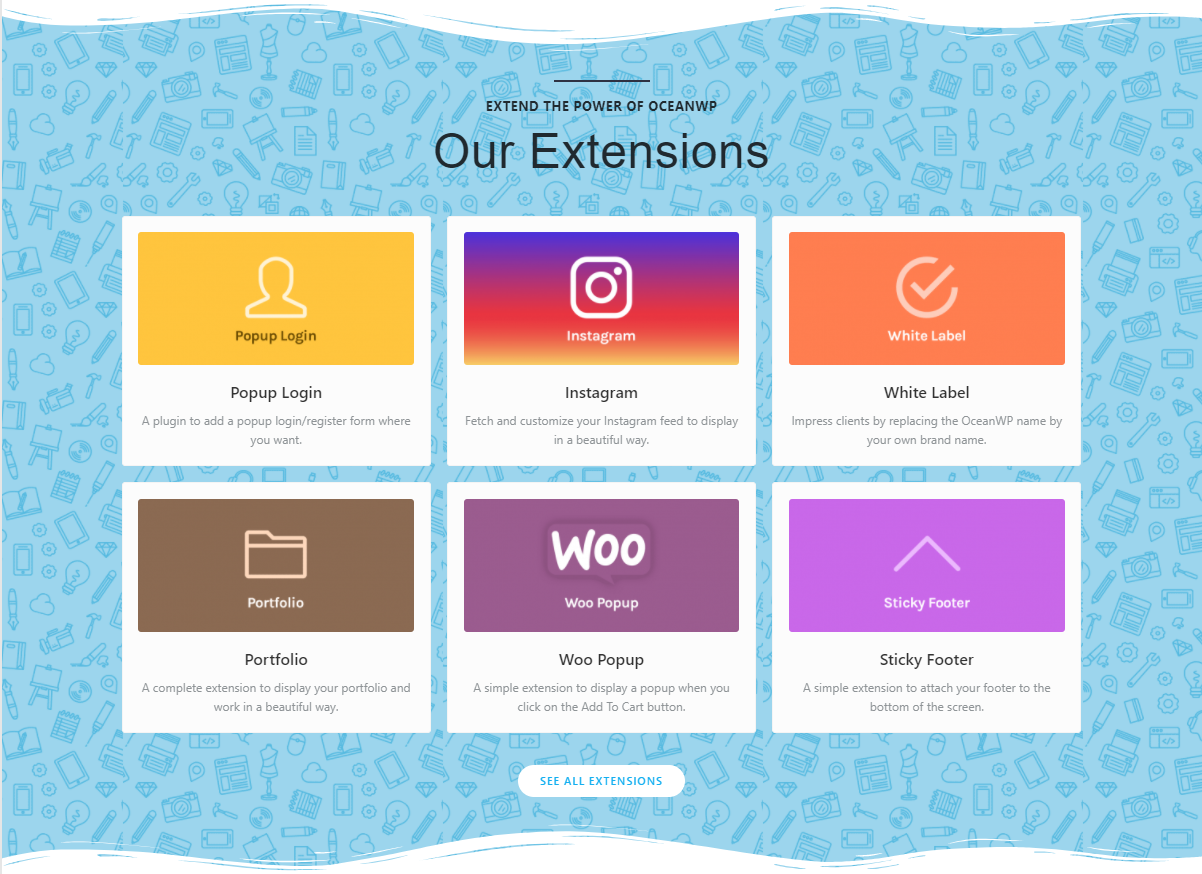
As a passionate developer, I get so many ideas on a weekly basis to add more improvements and features to my theme. If I were selling a premium theme, I would have had to bury most of them, but now I can choose a couple to develop at a time, and then go on to the next. That way, I am making my product even better, without compromising on its performance or ease of use.
As already mentioned, it’s good for the buyers because they can pick the add-ons for specific features they want on their websites, and discard all the rest. They can customize their website exactly as per their needs, making the theme they bought one that’s perfect for them and their website.
#4 – More Profit Potential
As I wrote above, the buyers of a premium theme are buying all the features with it, whether they need all of them or not. As a result, the value of the overall product gets diminished.
When we turn this theory around, the buyers of paid add-ons of a free theme are buying those add-ons because they really need them. So by the rule of supply and demand and the fact that an add-on is more valuable to a buyer than a premium theme, you can safely and fairly demand a good price for it.
Buyers of a premium theme are buying all the features with it, whether they need all of them or not. As a result, the value of the overall product gets diminished.
That’s not to say that each add-on should cost as much as a premium theme, but, depending on the functionality, you can easily set a price for each add-on that’s about half or one-third of an average premium theme.
Your product portfolio should be created in a way that most premium buyers would want to buy 3 or more paid add-ons for a niche purpose. And in the process, they will end up paying more than what they would have paid for a premium theme.
Grab a free copy of our Cheat Sheet for
Selling Plugins and Themes
A growth roadmap with concise, actionable tips for every milestone of WordPress product development.

To make things more tangible, let’s say I want to sell a monthly subscription of my software with Easy Digital Downloads. And at the very least, I want the users to be able to opt-in for recurring payments, and pay with their credit card (Stripe integration) as well as Paypal.
Here are the single-site license prices for the add-ons I’ll need:
- Paypal Pro & Express – $199
- Stripe Payment Gateway – $89
- Reviews – $89
So how much in total would I have to pay? A whopping $377. Not bad at all. And remember, this is how much EDD makes from one customer.
What’s Not So Great About The Paid Add-ons Model?
Before you get carried away with all the benefits I outlined and get serious about following the add-ons model for your own business, you need to understand both sides of the coin.
All these benefits are not without associated costs. Here is a list of concerns you need to factor into your decision:
#1 – Gets Expensive For Some Users
Let’s consider the same example we discussed above. For a seller who wants to sell monthly subscriptions of his software, the total cost with Easy Digital Downloads can sum up to a substantial amount. Many people who are just starting out and new to selling stuff online may not be ready for that kind of an expense, and since this is more likely to be their first business, they are just testing the waters and not making enough money just yet to justify the expense.
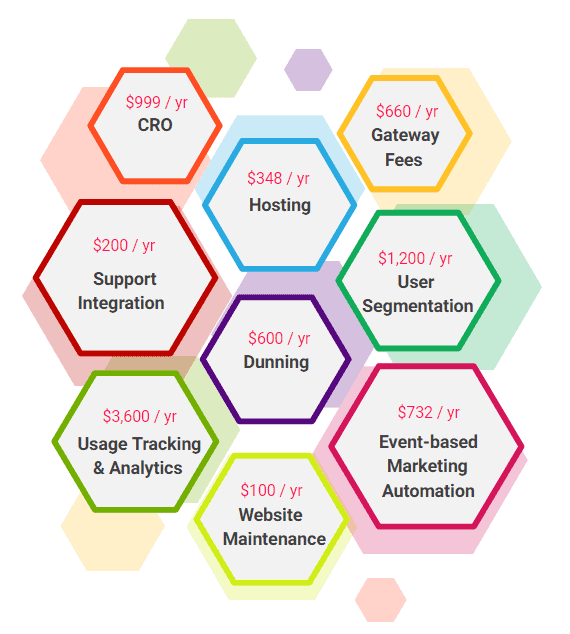
The add-ons model has the tendency to quickly get expensive for buyers who are testing a market idea on a limited budget. Unless they are entering a business with solid research and trust that they will make money, they will not be willing or able to afford the add-ons they need.
However, a great solution to this problem is offering a few add-ons bundled together for a specific type of site.
For example, you sell a bundle of all the add-ons a buyer might need for an e-commerce site, another bundle for a magazine site, and yet another for a software subscription site, and so on.
WooCommerce does this really well by grouping add-ons into bundles for specific needs. There are separate bundles for building a storefront, a membership site, a booking site, etc.
#2 – Hard To Change/Maintain The Portfolio
The more add-ons you offer, the more code projects you’ll have to maintain. You’ll also have to be really careful when you change or update anything in the base theme so that its compatibility with all the add-ons is not compromised.
When I work on a new feature in my base theme, for instance, I must revisit its add-ons as well, to edit the code. If the change requires me to update all of my add-ons, then it may take a lot of time to release all the updates.
#3 – Additional Copywriting & Marketing Investment
With every new add-on you offer, you need a new sales copy, landing page, documentation, changes to your existing collateral and more, in order to make sure it gets the right amount of attention in relation to your theme’s other add-ons and gets enough exposure to potential buyers.
When selling a premium theme, not every feature requires the same amount of attention and effort. You can just focus on emphasizing its few most important benefits.
Ultimately, all of these drawbacks boil down to one thing – the free theme with paid add-ons model makes your business more complex when compared with the premium theme. And this complexity impacts both the parties – the developer as well as potential buyers.
The more products (add-ons) you have to sell, the more time and effort it’ll take to manage, update, promote and sell them.
Conclusion
Picking a business model for your themes is not an easy decision to make. Between a one-time purchase or monthly subscriptions, between freemium or premium, and between paid add-ons or memberships, there is a lot of variation in the WordPress industry.
Based on my 5 years of development experience, I can tell you that just building one of the fastest, stunning and highly customizable themes won’t be enough.
You need to leverage as many ways as you can to differentiate your brand from hundreds of other theme companies. And your business model can be one of those ways. If it works for plugins, and it works for my theme, then it can work for your product too.
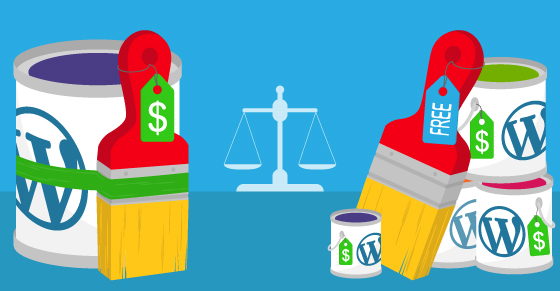

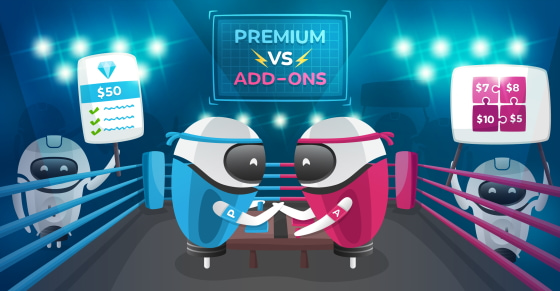
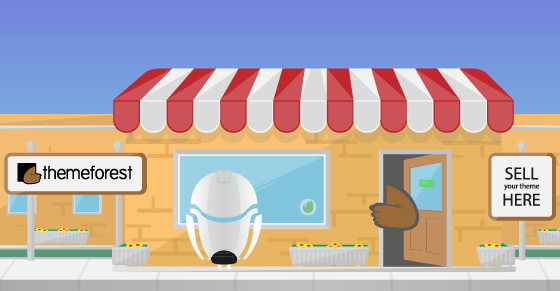




I was previously using the Addon model for my ProfilePress plugin but found out the cost of multiple addons can add up quickly and become expensive for buyers similar to the EDD illustration you mentioned. I have since moved to a simpler pricing model where Addons are available to you depending on the plan you choose.
Excellent interview and thanks Nicolas for doing this.
Hello Collins, EDD is one of the sites that push me to sell add-ons for OceanWP :)
I have been making websites since the mid-90s, but just stuck my toe in the WordPress pool about a week ago. I am still at the bottom of the learning curve but following the advice of my first tutorial author, Tyler Moore, I installed OceanWP as my first theme. Since then I've been tempted to switch to another theme, but since reading this article I've decided to stick with OceanWP. Before reading this I was not aware that going from OceanWP Free to Premium was an incremental option. I like the idea of better performance through eliminating unneeded code. After looking at the add-ons I find there is probably only one that I will want when I do my second WordPress site. Thanks for a good resource from a WordPress newbie who's been doing computers since 1969.
Wow, I really feel sorry for free theme developers after reading this.
With that many downloads and active installs, revenues are underwhelming to say the least.
Ultimate Member has the same number of active installs and a very similar numbers of average daily downloads and it's making almost 3 times more in revenues. What's sad is that Ultimate Member is a mid player plugins with one of the lowest conversion rate around.
Easy Digital Downloads, with 2/3 of the installs, made $946,000 last year. Wp Job manager was doing $80k a month with +80k active installs when bought by Automattic in 2015, I'm sure it improved after it.
Even us, with 9 times less active installs and less than 200 downloads per day, we have much better revenues than that.
Hopefully OceanWP will be sustainable in the long run, but with the amount of support tickets that it gets on wp.org alone, I really don't know how's that going to be possible.
In my opinion prices are way too low. I would raise them X3 minimum. Less work and a lot more in your bottom line.
You should read Pippin's blog post about increasing prices: https://pippinsplugins.com/reflection-on-a-price-increase/
Thanks for your note, Paolo. I think that there are so many differences between plugins and themes that comparing them based on
revenue / free_installsis just inaccurate. Few major differences:Finally, not all products are the same. For instance, I have a good feeling that Yoast's SEO has a low conversion rate from free to paid since their free version is already packed with everything that an average website needs. On the other hand, you have plugins/themes that were built with conversion optimization in mind. Pop-up plugins are a great example. Most of them will charge you for the exit-intent functionality which is pretty essential. Naturally, they will have a higher CTR.
Hi Vova,
thank you for blogging so many useful insights!
Plugins generally have less competition, I agree, but OceanWP's support forum on wordpress.org, seems to be a lot busier then ours and at least as busy as that of UM or EDD.
Comparing products based on revenue / free_installs shows the ability to convert a free user into a paying user.
If the conversion is too low, you are probably giving too much away for free.
Don't get me wrong, your arguments are valid, but with that visibility, with 90k installs and an average of 2500 downloads per day, I still believe OceanWP should be doing a lot better than that.
If they don't see price resistance with their current extensions, they should raise prices and if they do see price resistance, they should find more profitable extensions to sell.
I would have plenty of idea to help them become more profitable, but I don't work for free. :-)
Hello Paolo, you have totally right. I planned to do something but I need to wait until May, then a friend will do marketing and the revenue will be much better :)